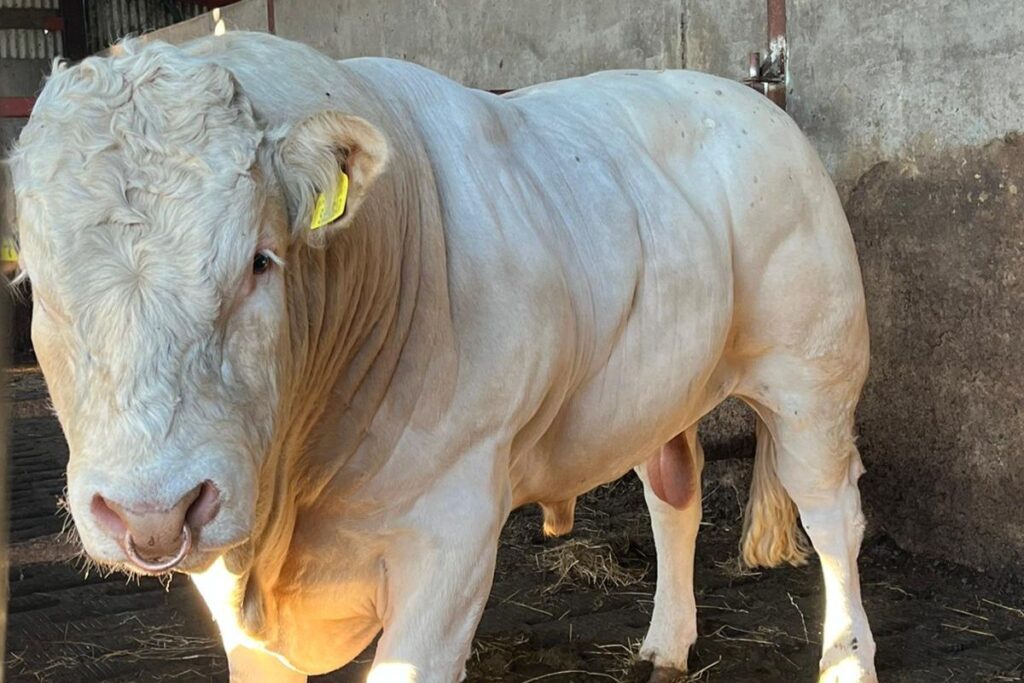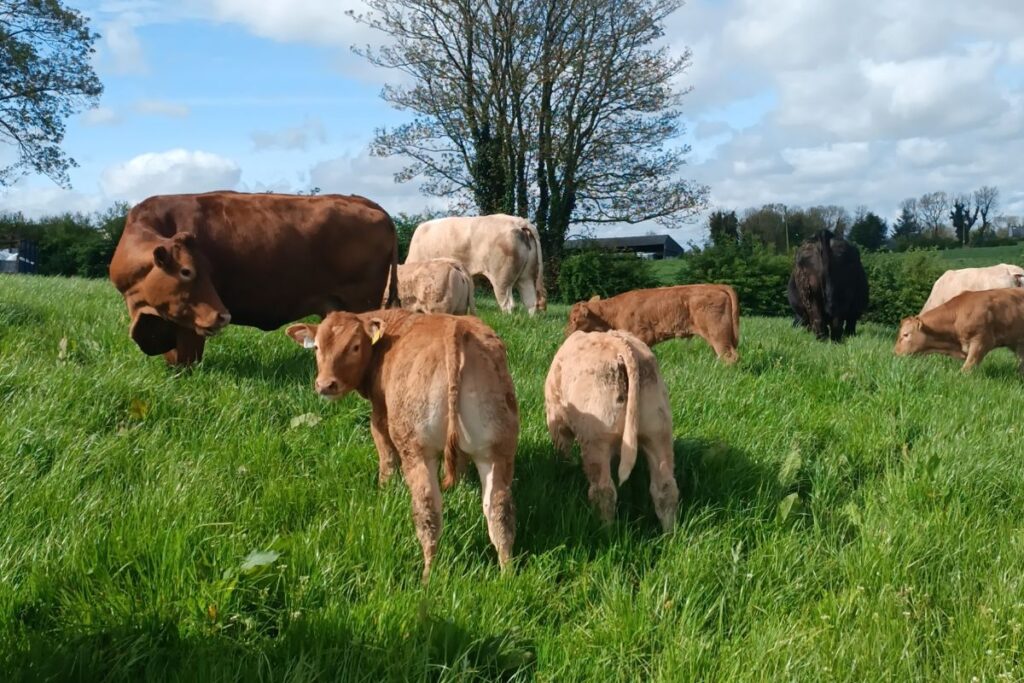That’s Farming editor, Catherina Cunnane, in conversation with Shane Reilly of Raghallaigh Blondes in County Cavan in this week’s Suckler Focus series.
“Farming has always been in the family as far back as my father, Seamus, and I can remember.
We always have been suckler farmers, and we never considered any other enterprise type as it is what we grew up with.
Dad has always had commercial cattle, and then I got involved in farming at a young age.
We cleared out some cows that were not giving us the quality calves that we desired and retained some good heifers, and bought in others that we thought would give us the calf we wanted.
We both work full-time off-farm while running a 20-cow suckler herd.
Part-time farmers
My father has his own bus company, Reilly Coach Hire, which caters for all the secondary schools in Cavan town, so he does the bus runs, and then he is back on the farm early enough during the week, so he can cast an eye on stock.
Meanwhile, I am working for Riteway Energy Solutions, and honestly, I cannot say sing their praises enough.
If there ever is an issue on the farm, which may require me to be at home, I can leave the site and head home.
There is never a problem in going; it is great to have that level of understanding.
I go to work plumbing and then come home and do another shift on the farm when I come home, but it is good that my dad is there to ease the workload.
Dad would usually be around for any cows calving, and then I would be home from work at a good time in the evenings to look after anything that might need a hand.
Plus, we have extremely helpful neighbours that are always a phone call away if we are stuck.

Suckler herd
We have 20 cows at the moment: 5 pedigree Blondes, with plans for further expansion on this end, and the commercial females are Limousin-crosses or Charolais-crosses, across circa 35-acres.
In the last two years, we have expanded by around five suckler cows which is a steady increase.
I recently completed my Green Cert, so hopefully, in the near future, we may put up another shed.
But I am very satisfied with how we are progressing on our farm at the minute.

Blonde cattle
You could say I went mad into the Blonde breed because my father bought a Blonde bull roughly ten years ago from Dessie Donohoe, and he was a super stock sire.
He had length, width, and muscle – possessing basically everything you could want in a bull, and he produced super progeny.
The breed, in my opinion, may not be seen as frequently as other continental breeds, but it is most definitely starting to make waves in the ring.
We are members of the Irish Blonde Society, of which Ken Hill serves as breed secretary. He is a superb ambassador for the breed and is putting serious work into getting the breed more recognised.

A champion stock sire
A must-have start for any suckler herd is a good cow with milk to rear a calf, one that is good on her feet, is nicely sized and muscled and a nice head, coupled with proven parentage.
Personally, I love the look of a cow with muscle but not too much. Irish farmers, from what I can see, seem to be keen on a good animal with muscle.
2023 is the first year we can actually keep heifers that were born on the farm, as we have a new Blonde (BA) bull. We try calf down at 24-26 months, and while I appreciate that every farmer is different, we have not seen any side effects to calving down at that age compared to, let us, say, a 3-year-old heifer.
We would usually sell progeny in the mart in Ballyjamesduff, and we try to aim for at least 400kg to 500kg live weight when heading for the mart.
Our bull’s name is Gledney Shergar, and we bought him in August 2022 from a great livestock farm in County Down.
We actually saw the bull at Balmoral, and just by chance, we were in the market for a bull.
A short while after the show, he came up for sale, and he jumped at the chance to add him to our herd.
We would regard acquiring that bull as one of our highlights to date. He was crowned the reserve junior male champion and reserve overall junior champion, so it has been remarkable to bring a pedigree of this calibre into the herd.

AI
We have used some AI in the past, but now that we have a new stock sire, we will no longer need to do so.
Previously, we have used Faust & Glacon, two savage bulls that delivered great calves. Moreover, I have also utilised the AI Limousin bull, EBY and the AI Charolais bull, LAPON, on some of my father’s cows, which were extremely good calves also.
Our farm has a strict culling policy. If a cow has no milk, too much milk, poor feet or lameness issues or age is no longer on her side, she is sold, and we advocate the same for bulls when it comes to fertility, age and feet.
We are very lucky as we generally always get a calf from the cows every year, but this is a working farm, and things are far from perfect; sometimes, like other farmers, we have casualties.
Grassland
For our herd, superior genetics paints part of the picture and grassland management is another crucial aspect for us.
Having recently completed my Green Certificate, I learned more about the importance of maximising the use of grass.
We want our cattle to have access to grass that is of the best quality possible by not letting them graze it too tight, it at around 10cm, and graze it down to 4cm – but let me tell you, it does not always work out that way.
The quality of grass is by no means is it bad, but there is scope to raise the bar even further and getting more clover stitched into the fields is something we are looking into at the minute.

The future of suckler farming in Ireland
In terms of the suckler farming industry’s future, it is difficult to know really. From what I can see, smaller farmers are being pushed out of farming which is a shame,
Farmers like myself and my father are putting serious time and effort into their cattle to maybe not get back what we have put into them.
For a start, it is great to see That’s Farming’s editor, Catherina Cunnane, getting in contact in relation to featuring as part of its Suckler Focus segment to possibly help get suckler farming back on the map.
Suckler farmers are being overlooked, and it is sad because I know the effort that is going into it, so hopefully, this article can maybe open some eyes.
In my view, successful suckler farming is about producing the best progeny.
It is nice when a farmer comes about and praises you for the great cattle in the field or shed. But having plenty of good quality grass is a must too.”
To share your story, email – [email protected]





